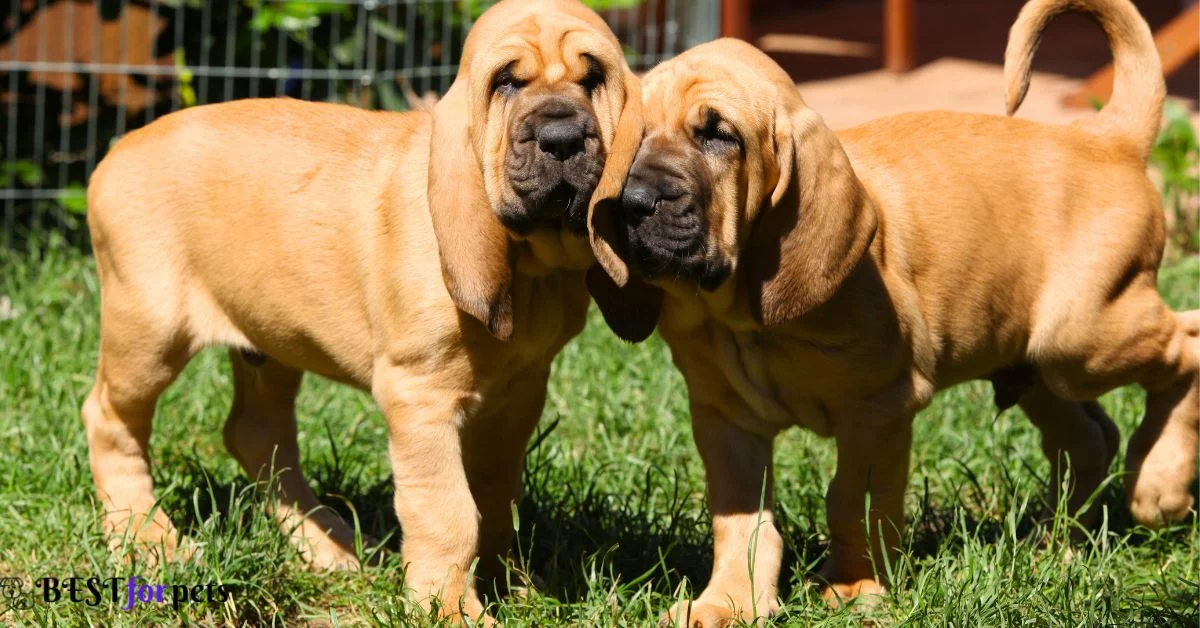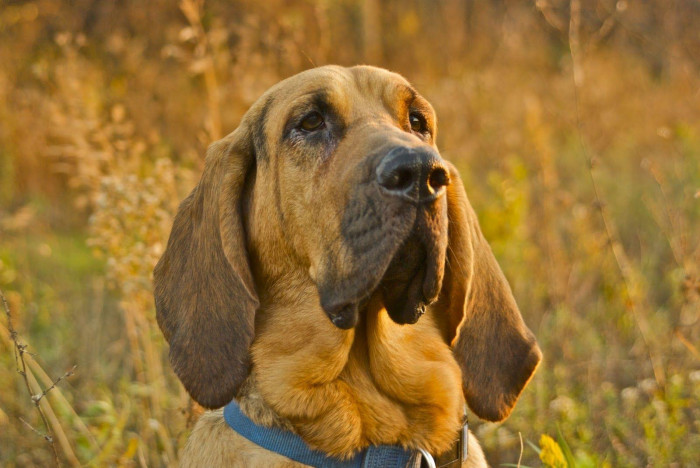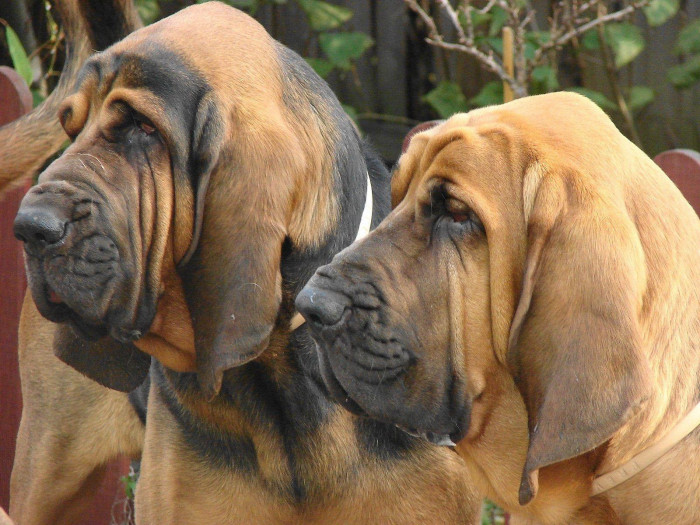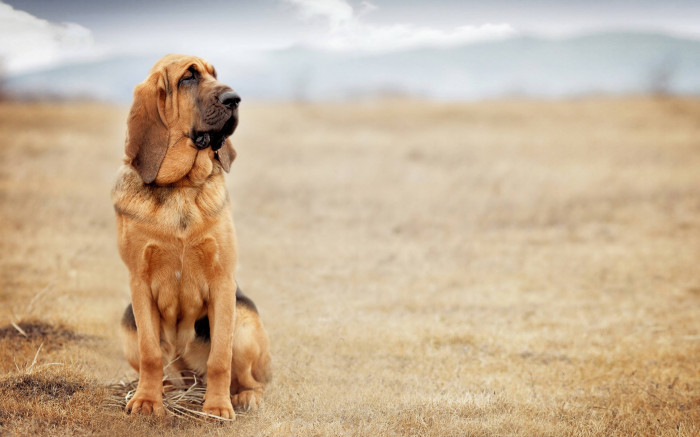//Prices//
Bloodhound Price In India
The price of a Bloodhound dog in India can vary depending on various factors such as the breeder's reputation, the bloodline of the dog, the location, and the demand for the breed. On average, Bloodhound price in indian can expect to pay between Rs 60,000 to Rs 1,00,000 or more ($800 to $1,300 or more)

Various Factors That Affects The Price Of Bloodhound
The price of a Bloodhound dog can be influenced by several factors. These factors can vary and may include
Breeder Reputation
Reputable breeders who have a long-standing history of breeding high-quality and healthy Bloodhounds often charge higher prices. They invest time, effort, and resources into breeding programs that prioritize the health, temperament, and overall quality of the dogs.
Bloodline and Pedigree
Bloodhounds with champion bloodlines or pedigrees from well-known and successful lineages tend to be priced higher. Dogs with exceptional lineage and a history of achieving accolades in conformation shows or working events are typically more expensive.
Health Testing and Certifications
Bloodhounds that undergo comprehensive health screenings, including tests for genetic disorders, may have higher prices. Responsible breeders prioritize the health of their dogs and conduct relevant health tests to ensure the puppies have the best chance of being healthy.
Demand and Availability
The demand for Bloodhound puppies can affect their price. If Bloodhounds are less common or in high demand in a particular region, the prices may be higher. Additionally, if there is limited availability of Bloodhound puppies in a specific area, the prices may be influenced accordingly.
Geographic Location
Prices can vary depending on the location. Different regions or cities may have different costs of living, varying economic conditions, and different breeder concentrations, which can impact the price range for Bloodhound puppies.
Age, Color, and Coat Quality
Factors such as the age of the dog, coat color, and the quality of the coat can also influence the price. Puppies are generally more expensive than adult dogs. Certain coat colors or patterns, such as rare or desired variations, may also affect the price.
An Introduction To Bloodhound
History of the Bloodhound
The Bloodhound has a rich and storied history that dates back centuries. The breed's origins can be traced to ancient times when they were developed by monks in Belgium and France. These early ancestors of the Bloodhound were bred for their exceptional scenting abilities, which made them ideal for tracking game and people. Over time, their reputation as skilled scent hounds spread across Europe, and they became highly sought after for their tracking capabilities.During the Middle Ages, Bloodhounds were frequently used by European nobility for hunting large game, including boar, deer, and wolves. Their exceptional sense of smell and tracking skills made them invaluable assets in hunting parties. As their reputation grew, Bloodhounds became more widely known, and their bloodlines were carefully maintained and refined.
Appearance of the Bloodhound
The Bloodhound's appearance is truly distinctive and unmistakable. This large breed features a strong and muscular body with a deep chest. The head is well-proportioned and adorned with wrinkled skin, giving the Bloodhound a unique and somewhat solemn expression. Their ears are long and droopy, falling alongside their face, helping to funnel scents toward their nose. One of the most notable physical features of the Bloodhound is its loose and wrinkled skin. This loose skin forms characteristic folds around the face, neck, and body, adding to their distinctive appearance. The coat of a Bloodhound is short and dense, often seen in shades of black and tan, liver and tan, or red. Their droopy eyes are soulful and expressive, conveying a sense of gentleness and wisdom.

Bloodhound Temperament and Activities
Despite their imposing appearance, Bloodhounds are known for their gentle and friendly temperament. They are typically affectionate and good-natured dogs , making them excellent family companions. They are particularly patient and tolerant with children, and their calm demeanor makes them suitable for households with other pets as well.Bloodhounds are highly intelligent and possess an incredible sense of smell. They have been specifically bred for tracking and trailing scents, and their abilities in this area are unparalleled. Their sense of smell is so acute that they can pick up scents that are several days old, making them exceptional search and rescue dogs .In terms of activities, Bloodhounds thrive when given opportunities to use their scenting skills. They excel in scent work and tracking exercises, which provide mental stimulation and fulfill their innate instincts. Bloodhounds are also capable of participating in obedience training, agility, and even therapy work due to their gentle nature.
Bloodhound Health Issues
While the Bloodhound is generally a healthy breed, like any other dog, they are prone to certain health issues. Understanding these potential health concerns can help you provide proper care and early detection of any problems. Here are some common health issues seen in Bloodhounds:
Bloat:
Bloodhounds are susceptible to bloat, also known as gastric dilatation-volvulus (GDV). This condition occurs when the stomach fills with gas or fluid, leading to twisting or torsion. Bloat is a medical emergency and requires immediate veterinary attention.
Hip Dysplasia:
This is a hereditary condition where the hip joint does not develop properly. It can lead to pain, lameness, and arthritis. Regular exercise, a balanced diet, and maintaining a healthy weight can help minimize the risk of hip dysplasia.
Ear Infections:
Bloodhounds' long, droopy ears are prone to infections due to poor air circulation and trapped moisture. Regular ear cleaning and drying are essential to prevent ear infections.
Entropion:
Entropion is a condition where the eyelid rolls inward, causing the eyelashes to irritate the surface of the eye. This can lead to discomfort, eye ulcers, and impaired vision. Surgical correction may be necessary in severe cases.
Skin Infections:
Bloodhounds have loose, wrinkled skin, which can trap moisture and lead to skin fold dermatitis. Regular cleaning and drying of the skin folds can help prevent infections.

Bloodhound Care Tips
To ensure the overall well-being of your Bloodhound, here are some care tips to keep in mind:
Regular Exercise:
Bloodhounds require regular exercise to maintain a healthy weight and prevent behavioral issues. They enjoy long walks, outdoor activities, and scenting exercises. However, be mindful not to overexert them in hot weather due to their predisposition to heat exhaustion.

Regular Veterinary Check-ups:
Schedule regular visits to the veterinarian for routine vaccinations, check-ups, and preventive care. Bloodhounds may benefit from additional screenings for conditions such as hip dysplasia and eye disorders.
Training and Socialization:
Start training and socializing your Bloodhound from a young age. They respond well to positive reinforcement methods and benefit from early socialization to ensure they grow into well-behaved and well-adjusted adults.
Balanced Diet:
Provide a high-quality, balanced diet appropriate for your Bloodhound's age, size, and activity level. Obesity can exacerbate certain health issues, so monitor their food intake and avoid overfeeding.
Grooming:
Bloodhounds have a short, dense coat that requires minimal grooming. Regular brushing will help keep their coat clean and remove loose hair. Additionally, pay attention to cleaning their ears, eyes, and skin folds to prevent infections.
Diet and Nutrition for Bloodhound
A well-balanced diet is crucial to maintain the health and vitality of a Bloodhound. Here are some guidelines for their diet and nutrition:
High-Quality Dog Food:
Choose a high-quality commercial dog food that is specifically formulated for large breed dogs. Look for a brand that lists meat as the primary ingredient and avoids fillers and artificial additives.
Feeding Schedule:
Divide the daily food portion into two or three meals to avoid bloat, a condition to which Bloodhounds are prone. Follow the manufacturer's recommended feeding guidelines based on your dog's age, weight, and activity level.
Portion Control:
Bloodhounds have a tendency to overeat, which can lead to obesity. Monitor their food intake and adjust portions accordingly to maintain a healthy weight.
Avoid Excessive Treats:
Limit the number of treats and avoid table scraps, as excessive calorie intake can contribute to weight gain and health issues.
Fresh Water:
Provide clean and fresh water at all times, especially during hot weather and after exercise.
Bloodhounddog Maintenance Cost
The cost of owning a Bloodhound includes various expenses, including food, grooming, veterinary care, and other miscellaneous items. It's important to consider these factors before bringing a Bloodhound into your home. Please note that the following cost estimates are approximate and can vary based on location and individual circumstances.
Food
The average monthly cost of high-quality dog food for a Bloodhound can range from ₹2,500 to ₹4,000 ($35 to $55). This estimate considers a balanced diet of commercial dog food, including both dry kibble and wet canned food.
Grooming
Bloodhounds have minimal grooming needs, but occasional grooming sessions are still necessary. The cost of grooming services can range from ₹500 to ₹1,000 ($7 to $14) per session, depending on your location and the services required.
Veterinary Care
Regular veterinary check-ups, vaccinations, and preventive medications are crucial for a Bloodhound's health. The cost of annual vaccinations and routine care can vary, but budgeting around ₹5,000 to ₹10,000 ($70 to $140) per year for veterinary expenses is a reasonable estimate.
Miscellaneous Expenses
Bloodhounds may require additional items such as toys, bedding, collars, leashes, and training equipment. These costs can vary, but budgeting around ₹2,000 to ₹5,000 ($28 to $70) per year for miscellaneous expenses should be sufficient.
Facts About Bloodhound Dog
1. Bloodhounds have an exceptional sense of smell, capable of tracking scents that are several days old.
2. They have loose, wrinkled skin and long, droopy ears, which contribute to their unique appearance.
3. Bloodhounds are known for their gentle and patient temperament, making them great family pets.
4. They are prone to bloat, a serious condition that requires immediate veterinary attention.
5. Bloodhounds may develop hip dysplasia and require regular exercise to maintain a healthy weight.
6. Their long ears require regular cleaning to prevent ear infections.
7. Bloodhounds have a melodious howl, often referred to as their “bay.”
8. They are often used in search and rescue operations due to their excellent tracking abilities.
9. Bloodhounds have a lifespan of around 8 to 10 years, but individual factors can influence this.
10. Their distinctive scenting skills and tracking abilities have been utilized by law enforcement agencies for centuries.
Frequently Asked Questions
Are Bloodhounds good family pets?
Yes, Bloodhounds can make excellent family pets. They are known for their gentle and patient temperament, and they generally get along well with children and other pets. However, it's important to note that Bloodhounds require proper training and socialization from an early age.
Do Bloodhounds require a lot of exercise?
While Bloodhounds are not excessively active dogs, they do require regular exercise to keep them healthy and mentally stimulated. Daily walks and playtime are recommended to prevent weight gain and to fulfill their need for physical activity.
Are Bloodhounds easy to train?
Bloodhounds can be independent and stubborn at times, which can make training a bit challenging. They respond best to positive reinforcement methods and patient, consistent training. Early socialization and obedience training are essential for Bloodhounds.
Do Bloodhounds drool a lot?
Yes, Bloodhounds are known for their tendency to drool. Their loose lips and jowls contribute to the drooling, especially after eating or drinking. It's important to keep a towel handy to wipe their mouths and maintain cleanliness.
Do Bloodhounds have any specific health issues?
Bloodhounds are prone to certain health issues, including bloat (gastric dilatation-volvulus), hip dysplasia, ear infections, and skin fold dermatitis. Regular veterinary check-ups, a balanced diet, and proper grooming can help prevent and manage these conditions.
Are Bloodhounds good at tracking scents?
Yes, Bloodhounds are renowned for their exceptional sense of smell and tracking abilities. They have been used for centuries in tracking people, search and rescue operations, and scent work activities. Their scenting skills are among the best in the canine world.

